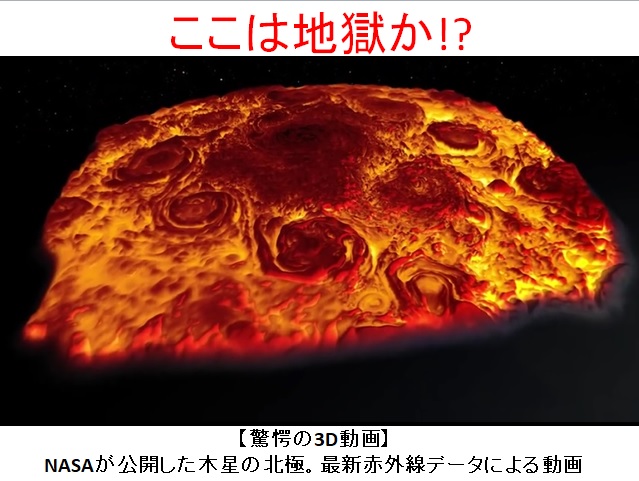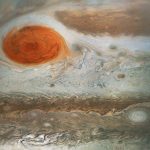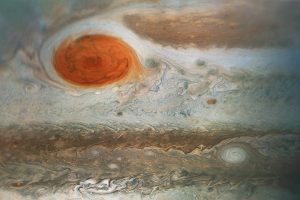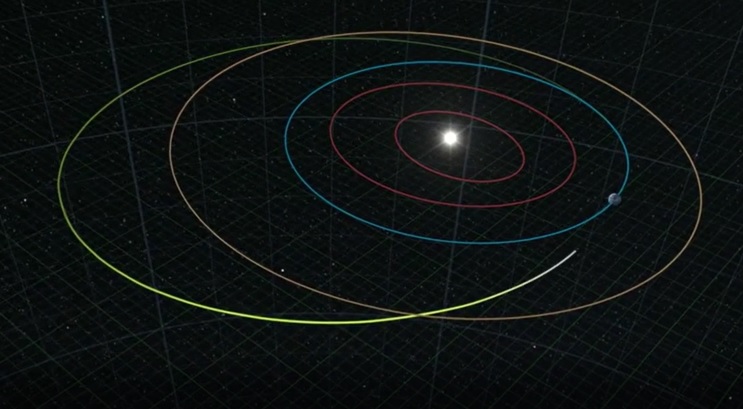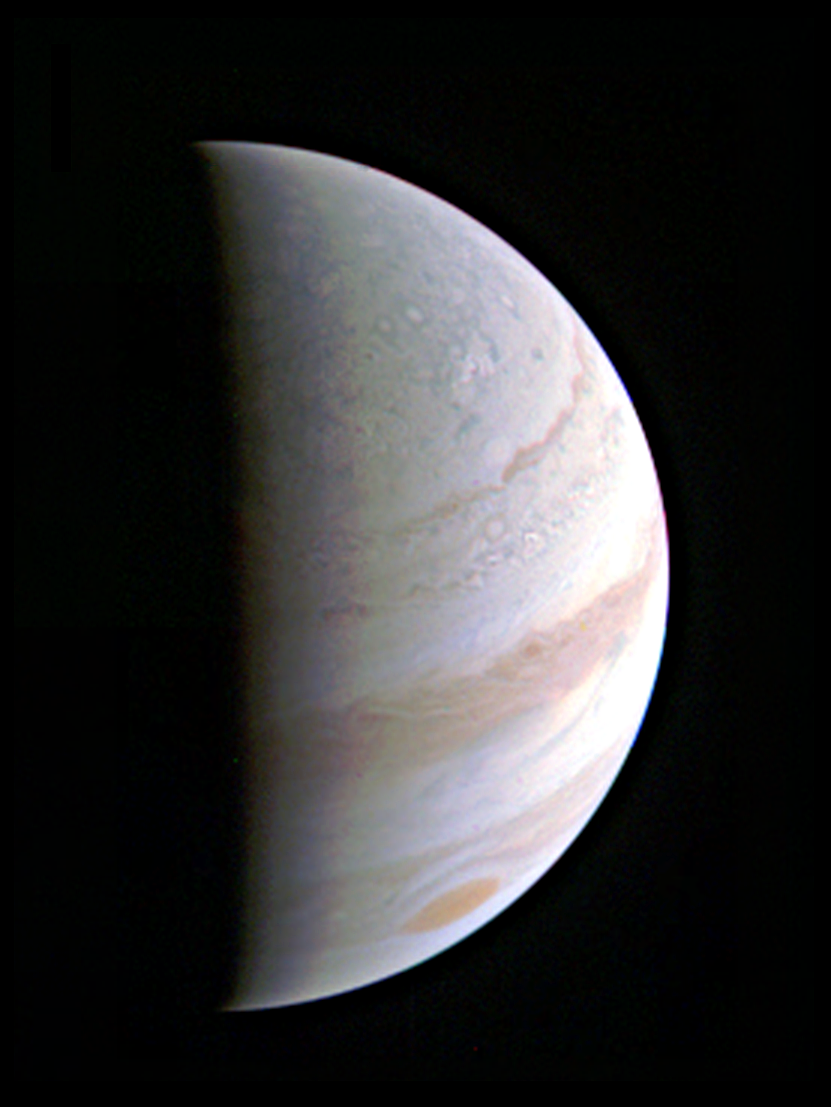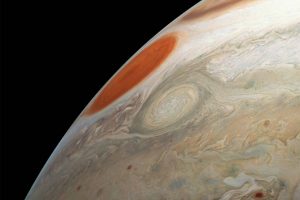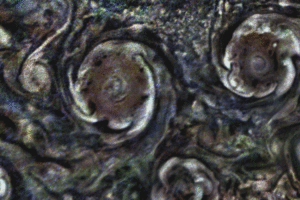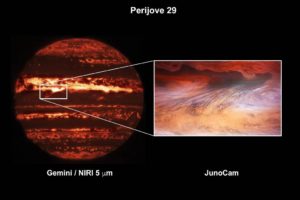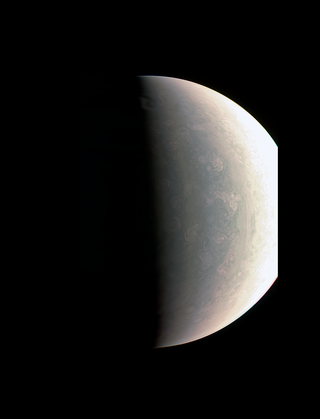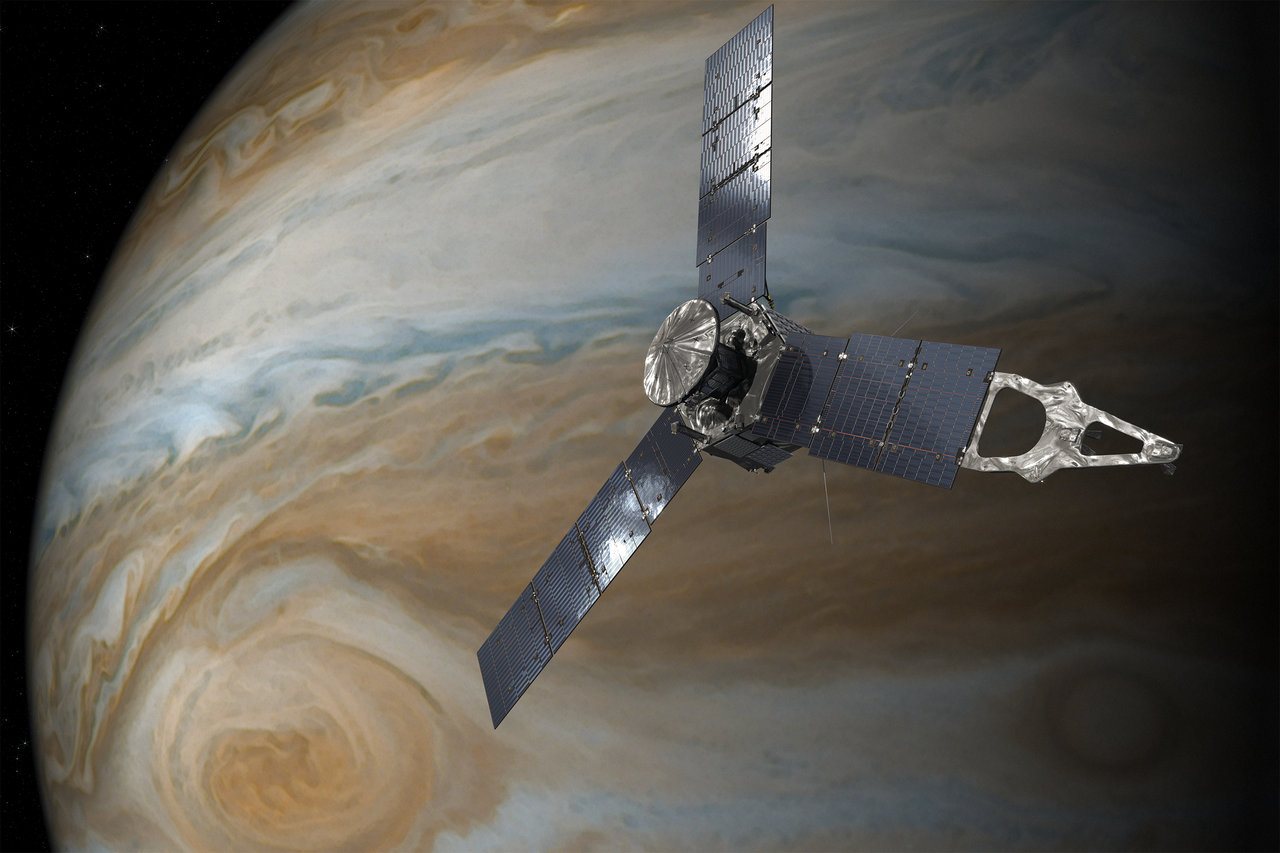木星の最新動画が公開されました。
「Jupiter North Pole Infrared Flyover」
「Low 3-D Flyover of Jupiter’s North Pole in Infrared」
2本の動画をまとめたものです。
NASAのオリジナル記事
Jupiter North Pole Infrared Flyover
An infrared view of Jupiter’s North Pole.
木星北極の赤外線観測結果です。
The movie utilizes imagery derived from data collected by the Jovian Infrared Auroral Mapper (JIRAM) instrument aboard NASA’s Juno mission.
この動画では、木星探査機搭載の Infrared Auroral Mapper (JIRAM) という赤外線カメラにより撮影されたデータを活用しています。
The images were obtained during Juno’s fourth pass over Jupiter.
画像データはジュノーの4回目の木星最接近時に撮影したものです。
Infrared cameras are used to sense the temperature of Jupiter’s atmosphere and provide insight into how the powerful cyclones at Jupiter’s poles work.
赤外線カメラは木星大気の温度を調べ、木星の極に存在する強力なサイクロンがどのような作用を及ぼしているのかを解明するために使用されます。
In the animation, the yellow areas are warmer (or deeper into Jupiter’s atmosphere) and the dark areas are colder (or higher up in Jupiter’s atmosphere).
この動画での黄色の領域は暖かく(木星大気の下層部)、暗い領域は冷たい(木星大気の上層部)ものであることを表しています。
In this picture the highest “brightness temperature” is around 260K (about -13°C) and the lowest around 190K (about -83°C).
この画像では、最も高い「輝度温度」は約260K(約-13℃)で、最も低い温度は190K(約-83℃)です。
The “brightness temperature” is a measurement of the radiance, at 5 µm, traveling upward from the top of the atmosphere towards Juno, expressed in units of temperature.
「輝度温度」とは、大気の上部からジュノーに向かって放射されてくる輝きを5μm単位で、温度の単位で表したものです。
Credit: NASA/JPL-Caltech/SwRI/ASI/INAF/JIRAM
Low 3-D Flyover of Jupiter’s North Pole in Infrared
In this animation the viewer is taken low over Jupiter’s north pole to illustrate the 3-D aspects of the region’s central cyclone and the eight cyclones that encircle it.
Read more: https://www.nasa.gov/feature/jpl/nasa…
こちらの動画は木星の北極をより低空から観測できるように3次元的な処理を加えたもので、中央のサイクロンとそれを囲む8つのサイクロンを見ることができます。より詳しく知りたい方はこちら:https://www.nasa.gov/feature/jpl/nasa…
The movie utilizes imagery derived from data collected by the Jovian Infrared Auroral Mapper (JIRAM) instrument aboard NASA’s Juno mission during its fourth pass over the massive planet.
この動画では、木星探査機搭載の Infrared Auroral Mapper (JIRAM) という赤外線カメラにより撮影されたデータを活用しています。
Infrared cameras are used to sense the temperature of Jupiter’s atmosphere and provide insight into how the powerful cyclones at Jupiter’s poles work.
赤外線カメラは木星大気の温度を調べ、木星の極に存在する強力なサイクロンがどのような作用を及ぼしているのかを解明するために使用されます。
In the animation, the yellow areas are warmer (or deeper into Jupiter’s atmosphere) and the dark areas are colder (or higher up in Jupiter’s atmosphere).
この動画での黄色の領域は暖かく(木星大気の下層部)、暗い領域は冷たい(木星大気の上層部)ものであることを表しています。
In this picture the highest “brightness temperature” is around 260K (about -13°C) and the lowest around 190K (about -83°C).
この画像では、最も高い「輝度温度」は約260K(約-13℃)で、最も低い温度は190K(約-83℃)です。
The “brightness temperature” is a measurement of the radiance, at 5 µm, traveling upward from the top of the atmosphere towards Juno, expressed in units of temperature.
「輝度温度」とは、大気の上部からジュノーに向かって放射されてくる輝きを5μm単位で、温度の単位で表したものです。
Credit: NASA/JPL-Caltech/SwRI/ASI/INAF/JIRAM
